What do more than half of your shoppers have in common with each other? Pets! About 62% of U.S. households own at least one pet, and 47% percent have at least one dog, according to The Humane Society. Incorporating some pet care items into your store will likely make your loyal pack see your business as a one-stop shop for the entire family—and yes, that includes the furbabies!
From Pet Owner to Pet Parent
Five years ago, Americans were just starting to think of their four-legged-friends as “family members.” Today, the concept is fully established and accepted. And so, pet ownership has shifted to pet parenting or guardianship. What does that mean for pet products sellers?
States Sara Phillips, strategic brand manager at FoodScience Corporation/Pet Naturals, Essex Junction, VT, “We’ve seen an obvious progression from the human natural food movement, where people treat their pets like they want to treat themselves.” Food, snacks and healthcare items must be high quality to meet shopper demand, and that means more natural health solutions, she explains.
Don’t be surprised if pet parents come begging for non-GMO, gluten-free or paleo foods and whatever is trending in human food consumption. States Erin Hay, sales representative in the retail pet division, Nordic Naturals, Watsonville, CA, “Pet product consumers are educating themselves well around issues like certified lab testing, purity, country of origin, non-GMO products—essential issues of safety and efficacy that matter more than ever for the health and safety of the pet members of the family.”
A lot of quality issues came to a head in 2007 with the melamine-laced pet food scandal, which Ward Johnson, owner and president of Sojos, Minneapolis, MN, says “caused a spike in interest that’s continued to grow year after year.”
Pets are also living longer, and pet guardians want to make a 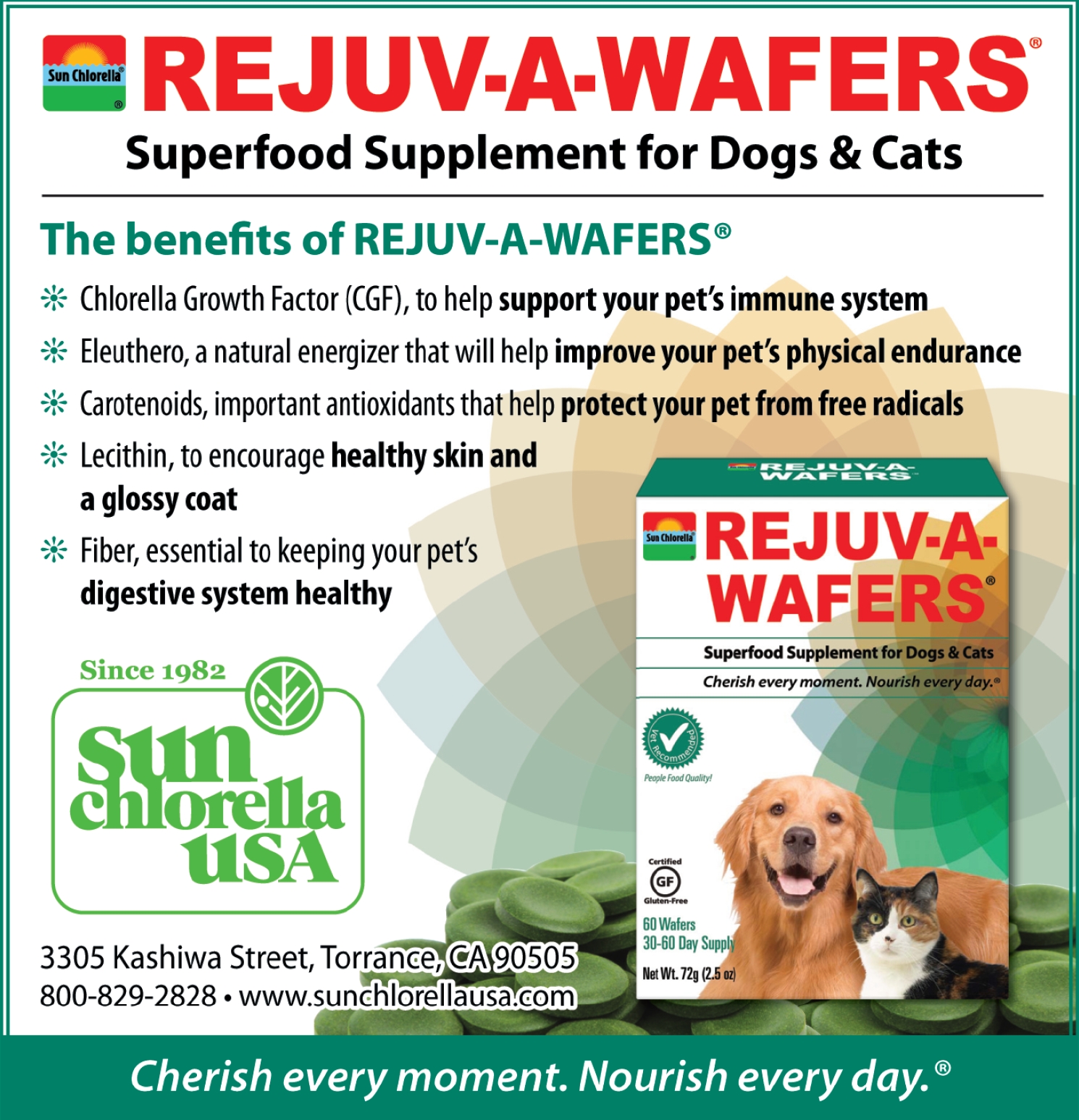 solid wellness plan for them throughout their lives, Hay states. “It means people accept higher nutrition and food costs, while adding supplements like omega-3 fatty acids to their pet’s daily diet for optimal lifelong health,” says Hay.
solid wellness plan for them throughout their lives, Hay states. “It means people accept higher nutrition and food costs, while adding supplements like omega-3 fatty acids to their pet’s daily diet for optimal lifelong health,” says Hay.
Susan D. Weiss, president of Ark Naturals Products for Pets, Naples, FL, has observed a change from vets over the years, too. The conversation of putting an older or ill animal “to sleep” has become a search to find whatever tools are available to keep a dog or cat happy and comfortable with owners basically saying, “Do whatever it takes. I can’t bear to live without my dog/cat,” says Weiss.
Partly for this reason, retailers and manufacturers are seeing an uptick in interest for nutritional products in addition to natural foods, treats and hygiene products. And, companies are responding with healthier options. States Tommy Gay, president and founder of Look Who’s Happy, Gainesville, GA, “Consumer demand for natural products…will only increase over time as the benefits are better identified and understood.”
So, shoppers are seeking. Pet products companies are innovating. How is your store responding?
Go Fetch Grain-Free for Your Store
The rise of interest in paleo has opened the door for shoppers to invest in grain-free diets for their cats and dogs that are closer to an ancestral diet. Some pet guardians want to stay away from grains because of digestive issues, especially cooked grains in conventional kibble products. “Over time, they can lead to severe allergies and food sensitivity. That’s why dogs experiencing problems with cooked kibble often have much better results with grain-free foods,” Johnson believes.
Other pet parents are consuming less carbohydrates themselves for health reasons, and want the same for their furry friends with the belief that it’s healthier overall. “Grain free is fundamentally what the high-end consumer is looking for: premium meat without fillers,” states Scott Whipple, cofounder of CANIDAE Natural Pet Food, San Luis Obispo, CA. “A growing segment of consumers sees foods with grain as fillers.”
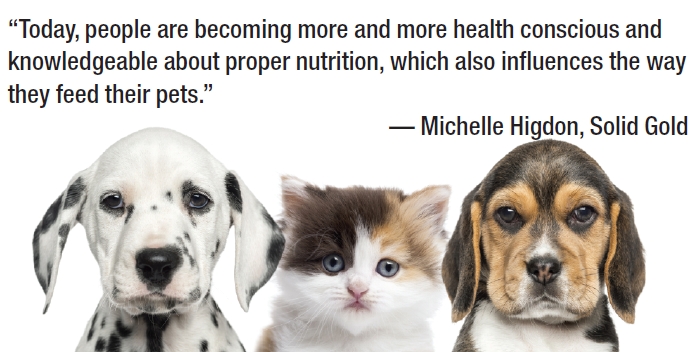 Unwanted dog and cat food fillers are enough to make pet guardians as sad as a hound dog’s eye, as the saying goes. That includes those tricky ones that sound like legit health ingredients, but are far from it. Says David Yaskulka, vice president of marketing communications, Halo, Purely for Pets, Tampa, FL, “Companies that use rendered ingredients like chicken meal—which sounds fit for human consumption, but never is—will give way to companies using only real meats.”
Unwanted dog and cat food fillers are enough to make pet guardians as sad as a hound dog’s eye, as the saying goes. That includes those tricky ones that sound like legit health ingredients, but are far from it. Says David Yaskulka, vice president of marketing communications, Halo, Purely for Pets, Tampa, FL, “Companies that use rendered ingredients like chicken meal—which sounds fit for human consumption, but never is—will give way to companies using only real meats.”
Perhaps, creating a “choose this, not this” checklist for pet foods will encourage shoppers to read labels and make informed decisions. This can be especially helpful when conventional companies attempt to look natural with their packaging, but don’t make good on the inside. Says Bette Schubert, co-founder and senior vice president of sales, new product development and education at Bravo, “[Consumers] are finding that what they thought were good food choices before may not actually be.”
So, should you make your pet care offerings a grain-free zone? No, not at all. Remember, while some companies use corn fillers, others use healthier whole grains like brown rice, barley, oats and millet, which have a lot to offer. “We believe there is a need for both types of diets,” Yaskulka says, noting grain-free options may be great for pets with ingredient sensitivities. “However, we believe that healthy, whole grains offer nutritional benefits to pets,” he states.
Michelle Higdon, CEO of Solid Gold, Greenville, SC, points out that the decision to put an animal on a grain-free diet should be based on a pet’s unique needs, including several factors like age, breed, activity levels and general health. “When it comes to a pet’s diet, one size does not fit all…While a grain-free diet is appropriate for some dogs, it shouldn’t be assumed that it is right for all dogs. Education is a really important component to making these decisions,” states Higdon.
Cool Cat
Kibble-style pet food may dominate the market for convenience, says Johnson. But, there’s another food segment that’s piquing shoppers’ interest: frozen and refrigerated pet foods.
Bobbye Cochran, president of Lincoln Bark, 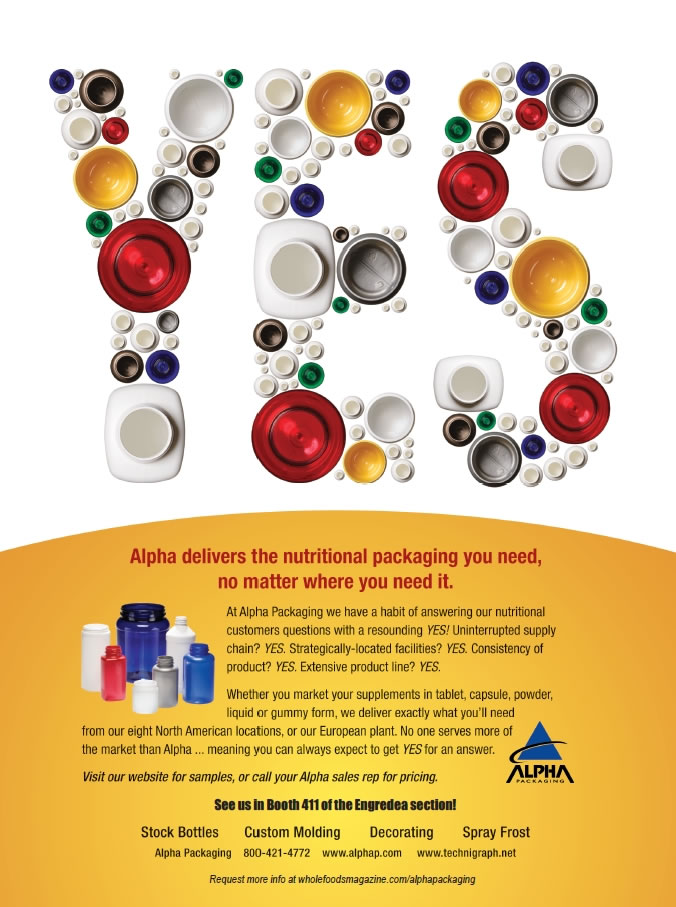 Chicago, IL, explains that some dry and canned pet food is baked. “Heat will reduce nutrients in most foods. If the food is not processed and only blended with other healthy ingredients, refrigerated or frozen is the healthiest delivery method,” she believes.
Chicago, IL, explains that some dry and canned pet food is baked. “Heat will reduce nutrients in most foods. If the food is not processed and only blended with other healthy ingredients, refrigerated or frozen is the healthiest delivery method,” she believes.
Johnson believes beyond freshness, refrigerated and frozen pet foods have a leg up over some other options because they contain real, naturally occurring nutrients and enzymes for an animal’s optimal health and wellness.
Schubert explains that raw foods tend to be simple, straightforward recipes, “providing animals with what they need from a nutritional standpoint—meat, bone and organs—without all of the things they don’t need.”
She believes when pets consume high-quality meats and poultry, meals not only taste better, but there are also healthier: “Some of the benefits pet parents immediately notice in raw-fed pets include better weight control, more energy, healthier skin, coats and teeth, better digestion and less smelly stools.”
But don’t count out kibble and cans. Higdon says that though shoppers perceive refrigerated and frozen pet food, especially raw, as healthier, she hasn’t seen any hard data showing a difference in health benefits over dry and canned pet food. And while Johnson also believes refrigerated/frozen pet foods are fine, he says, “the only downside is the inconvenience and expense.”
Whipple adds to this sentiment by explaining that most refrigerated or frozen pet foods are approximately 70% water and have only 30% dense nutrition. Meanwhile, kibble is ~10% moisture and 90% dense nutrition, he states, noting the per-pound cost of refrigerated and frozen foods can, therefore, be much higher.
Johnson’s firm addresses this issue with a nutritious shelf-stable raw pet food, while Caru Pet Food Company, Vero Beach, FL, launched a healthy ready-to-serve wet dog food with human-grade ingredients that’s packaged in Tetra Pak packaging. “This eco-friendly packaging is made to offer key benefits like being shelf stable and requiring zero preservatives,” states Adrian Pettyan, CEO and cofounder of Caru.
Pudgy Puppies
Is that husky becoming a little too much like his name? According to a survey conducted by the Association for Pet Obesity Prevention, 52.5% of dogs and 58.3% of cats were considered to be overweight or obese by their vets. Problems arising from being overweight are much like what we see in humans, with extra stress on the joints and the heart, and even diabetes. Yaskulka advises that families use natural, low-calorie treats and even count the calories in a pet’s daily allotment. “Only 10% or less of daily caloric intake should come from treats,” he believes.
 Snacking can go overboard, with some pet parents not even aware that snacks are filling their pets. States Gay, “Treats should always be fed in moderation and, therefore, ultimately make up only a small portion of a pet’s diet.”
Snacking can go overboard, with some pet parents not even aware that snacks are filling their pets. States Gay, “Treats should always be fed in moderation and, therefore, ultimately make up only a small portion of a pet’s diet.”
Supporting a healthy diet with treats should line up with your food offerings. Carry grain-/gluten-free or ancestral diet offerings, for instance, if pet parents use that type of food. Also, look for companies that are transparent about their products. “It’s important to look for natural snacks with a short, simple ingredient list,” says Johnson. “Even better, many snacks today also offer health benefits.” This may include treats, for instance, with joint support ingredients.
Pet experts say that snacking may not be the main cause of overweight pets, however. First and foremost, shoppers should focus on providing pets the healthiest minimally processed meals they can. “When they eat unhealthy processed foods and do not get enough exercise, they gain weight,” Weiss states.
Second is picking smart snacks, which Cochran believes should include highly nutritious all-natural ingredients like chia.
Some companies add in fruit for healthy palatability. Pettyan says her firm makes treats with fresh blueberries and cranberries because “they offer just the right amount of natural sweetness, plus provide added nutritional value. The final product is a soft, all-natural snack that dogs adore.”
Meanwhile, Whipple says his company makes 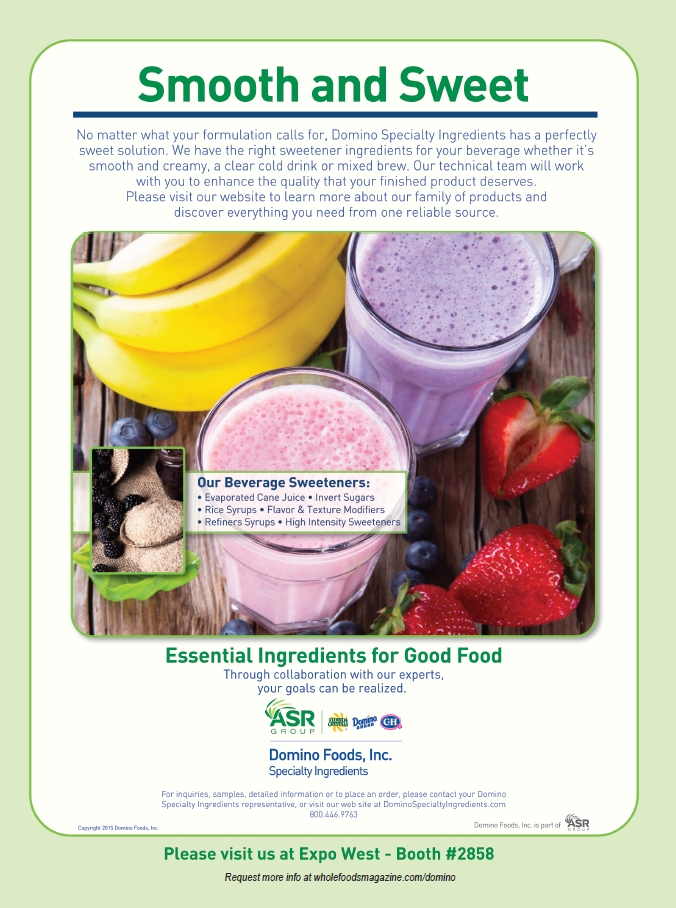 grain-free biscuits with ingredients like salmon/sweet potato, duck/chickpeas, bison/butternut squash for dogs and grain-free cat treats with salmon, trout, chicken and duck. “Similar to great pet food, pet snacks need to also contain whole foods, simple recipes and a grain free formula when possible,” says Whipple.
grain-free biscuits with ingredients like salmon/sweet potato, duck/chickpeas, bison/butternut squash for dogs and grain-free cat treats with salmon, trout, chicken and duck. “Similar to great pet food, pet snacks need to also contain whole foods, simple recipes and a grain free formula when possible,” says Whipple.
Schubert also believes that a great pet snack should be 100% meat or have meat as the first ingredient.
Some firms are also very selective about their processing techniques. Johnson says the treats marketed by his company are “made with 100% raw meat that we freeze-dry to lock in the natural enzymes and nutrients.”
Next, you might consider offering small-sized snacks. States Tracey Quillin, category manager of consumables at PetSafe, “With more pets facing weight problems, pet parents should look for low-calorie and small portion options to treat pets.” Her company, for instance, offers natural meat strips in bite-size slices.
Last is the basic principle that moderation is key. This is an important point for consumers to grasp. “As smart as our dogs/cats are they can’t open the refrigerator,” states Weiss. “We need to educate humans that snacks/treats are not formulated to meet the animal’s daily requirements.”
Nutritional Aids
You likely rely on supplements for your best-selling and most in-demand inventory items. Should you expand your offerings to your four-legged clientele?
Experts believe that they can be an important part of an animal’s wellness plan, but get your lingo straight first. Weiss says that while the “term” supplement is kind of an umbrella category in human nutrition, it isn’t necessarily the case for pets. “In the pet universe, a supplement only refers to vitamin-type products,” says Weiss, suggesting the term “remedies” for pet products.
Higdon makes the point that many high-quality pet foods already have everything an animal needs. “Certainly, if the pet food is well formulated and manufactured, there should be enough vitamins and minerals in sufficient quantities,” she believes. But, pets eating foods that are made with certain 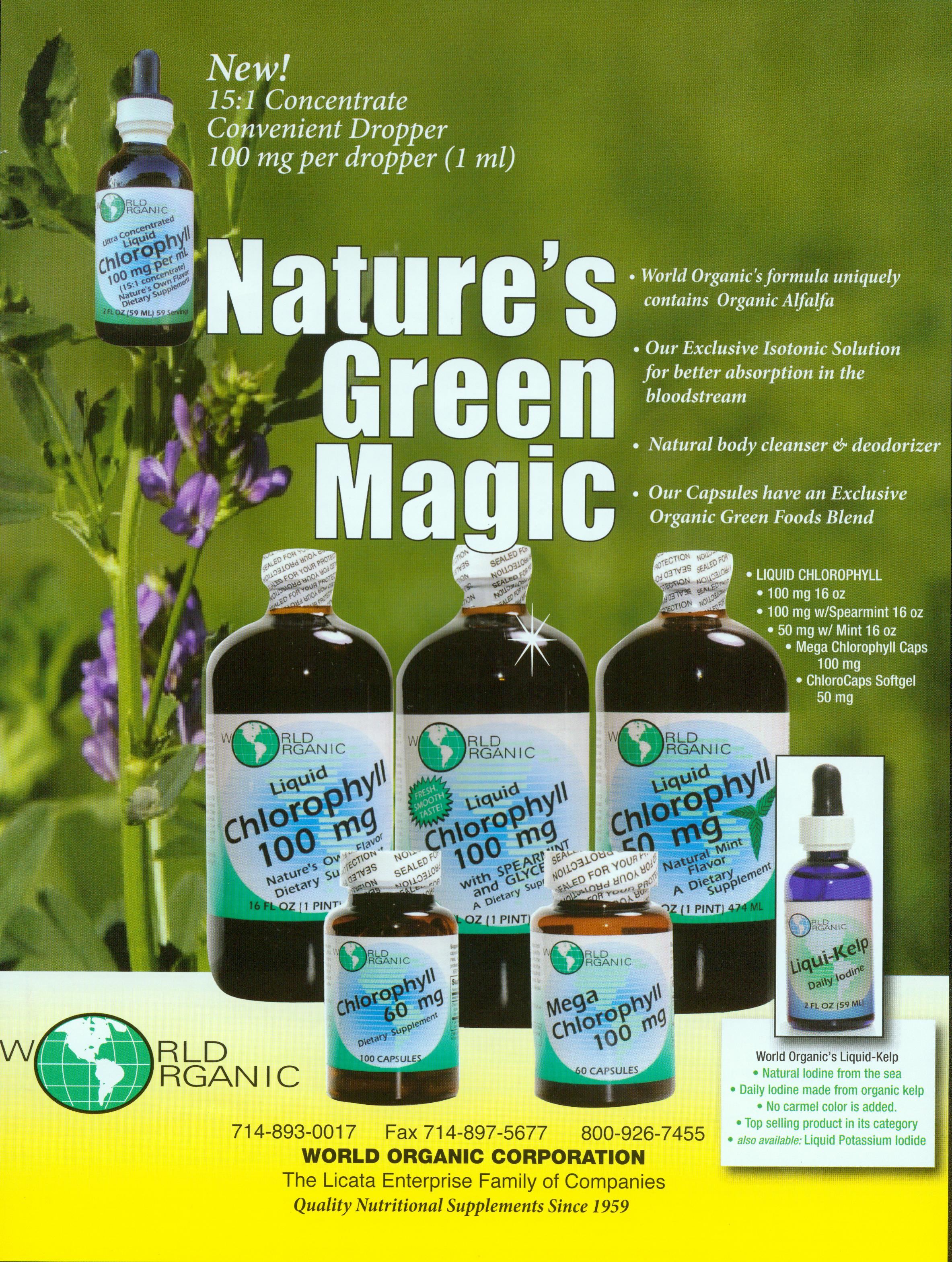 processes may not get all the nutrition they need due to high-heat processing or the presence of acid, which can destroy some nutritional components. “Other [nutritional components] are not included due to poor formulation by the pet food company. It is always best to proceed with caution with supplements as imbalancing the overall food regime could ensue,” says Higdon.
processes may not get all the nutrition they need due to high-heat processing or the presence of acid, which can destroy some nutritional components. “Other [nutritional components] are not included due to poor formulation by the pet food company. It is always best to proceed with caution with supplements as imbalancing the overall food regime could ensue,” says Higdon.
But, she says supplementing with vitamins and minerals can be a good idea if a pet has special needs, with a vet’s permission.
Joint health. Joint issues are some of the top reasons why pet guardians turn to natural remedies. Says Phillips, “We see a need for joint care for all pets, regardless of age, for calming support to combat the normal stress cats and dogs experience, and for the standard multivitamin formulation to address nutritional needs that may not always be met with the pet’s diet.”
While they cannot cure an animal’s problem, many support joint mobility and comfort. Higdon says that category standbys like glucosamine and chondroitin and newer ingredients like hyaluronic acid and other amino glycans can help pets and often aren’t found in the diet. “All of these would elevate the pet food to a high cost so they are better given as a supplement,” she states.
Yaskulka says essential fatty acids are important, and not just for joint care.
Skin and coats. Cochran makes the points that pets’ skin and coat may require some extra nutrition, and that some conditions may be exacerbated when certain nutrients are lacking.
Circling back to omegas, Hay believes, “Every store that sells high-quality pet foods should carry a proven omega-3 fish oil product. Omega-3 is a nutritional supplement that cannot be underestimated in its importance to lifelong feline and canine health.” She explains that in addition to making skin hydrated and fur shiny and healthy, omegas support cellular, immune and heart health.
Some formulate with omega-6s, and others, like Hay, believe omega-3s are the way to go. She states, “High-quality fish oil has been shown to be the safest, most effective source of the most important long-chain omega-3 essential fats—EPA and DHA.”
Hay, believe omega-3s are the way to go. She states, “High-quality fish oil has been shown to be the safest, most effective source of the most important long-chain omega-3 essential fats—EPA and DHA.”
While some firms add omegas to pet food, Hay believes the amount may not be enough. “Foods with added omega-3 are typically lacking in sufficient amounts of EPA and DHA, or contain short-chain plant-based omega-3s that pets cannot efficiently convert into EPA and DHA,” she states.
Digestion. Most pet food is lacking prebiotic fibers. Says Higdon, “Most of this is due to lack of understanding, but several new and effective prebiotics can be easily added to the food as in Solid Gold pet foods.” She says strains like lactic acid bacteria may benefit a pet’s gastrointestinal health, but it must be manufactured with a careful hand, since “they are very fragile and are easily destroyed with heat,” she states.
Chlorella is composed of 58% protein, and is a source of fiber and prebiotics for digestive health in pets, according to the Sun Chlorella Rejuv-a-Wafers Web site. The supplement also offers Chlorella Growth Factors, nucleic acids, polysaccharides and beta glucans for cellular and immune health, while other components support skin/coat health (lecithin), healthy stress response and energy (eleuthero), healthy teeth and gums (vitamins A and C, magnesium and phosphorus) and healthy vision (beta carotene). The company also believes the supplement supports healthy energy levels.
|
Pet Care Offerings Ark Naturals: Line of products for dogs and cats that includes Gentle Digest, Happy Traveler, Breath-Less Brushless Toothpaste, Royal Coat Express, Sea “Mobility” Joint Rescue, Gentle Digest, Don’t Shed on Me, Ears All Right, Eyes So Bright and more. |
Weight loss. Since many pets are considered overweight and obese, Higdon says fiber may support weight management. “The addition of fiber-containing supplements and treats helps improve satiety. The addition of L-carnitine helps to burn fat and lay down more muscle protein,” she says, adding that since only about half of pet foods contain l-carnitine, supplementation may be a good idea.
Groom and No Doom
Stores may also want to carry pet grooming products and oral care may be one for the list. Phillips states, “Oral health can affect the health of other systems and organs in the body, including the heart, lungs and kidneys, so it’s valuable to include a periodontal support product in their normal supplement regimen.”
Oral care products come in several shapes and sizes. For instance, Yaskulka’s company makes non-staining dental treats that encourages pets to chew, which helps clean teeth and freshen breath. The company adds in omegas-3 and -6s for extra benefit.
A new line from PetSafe (indigo Fresh) also features dental products that support a healthy mouth and fresh breath. Quillin says the long-lasting, textured chews “help deep clean teeth,” while crunchy dental sticks “last twice as long as the leading dental sticks brand” and the Fresh Dental Sauce functions as a dog food topping that “helps freshen breath with every meal.”
Pet Naturals recently launched oral health products, too. “Oral health is a simple powder for dogs that you can just sprinkle right on top of the food. It’s designed to be used between veterinarian cleanings to support cleaner teeth and fresher breath,” says Phillips. The company also has Breath Bars and Breath Bites with spirulina and cinnamon powder “to help control the bacteria that leads to nasty breath” and Clean Scat for cats with champignon mushroom for intestinal odor.
Last, Ark Naturals is a long-time maker of dental products like its Brushless toothpaste, which “combines the best pet dental ingredients with a method that is very user friendly,” states Weiss. These products are bound to keep pet kisses healthy and odor free. WF
Published in WholeFoods Magazine, March 2015










